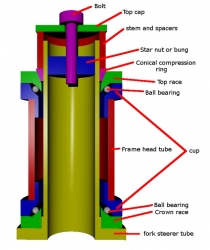Bike headset
headset Fixes, Reviews & Guides
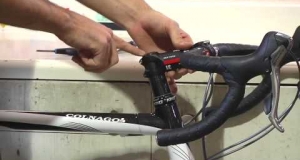
How to Tighten A Bicycle Headset
One of the most basic maintenance tasks you can do but one that can make a tremendous impact on how your bike handles is tightening your headset. If you are noticing that your fork shakes or you...

DIY- Make Your Own Headset Cup Remover Tool
This video will show you how to make a DIY bicycle headset cup remover tool.
To do this at home, you will need a hacksaw, something to secure the tube such as a seat clamp or vise, a file,...
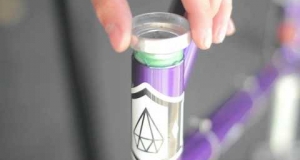
Install An External Cup Headset Without A Press
How to install an external cup bike headset without a press:
To do this project at home you will need bike grease, a piece of wood or something similar, and a hammer. The reason for using a...

Great Introductory Tutorial: Parts of a Bike Headset and How to Adjust
Let’s talk about adjusting your headset.
You might not even know what your headset is, and if you do, you might not know if it’s loose or not. But, if it is, chances are you had heard that...

How to Install a Cane Creek Threadless Headset
The headset is a small, yet critical component that is often overlooked. In this video you’ll see how to service, adjust, and install your thread less headset.
For this, you will need a...

DIY Fix a Loose Headset
There's a lot of moving parts on a bike that we often take for granted. Most riders don't think twice about our seat until it starts swiveling or our pedals until they get stuck. Along those same...

DIY Cut Bike Steer Tube and Tap Star Nut Down
I'm going to be trimming down my steer tube. I actually just thought this up on how to tap the star nut down without using an actual star nut tool. What I'm going to do is...

How to Install a Star Nut in a Bicycle Fork
I'm going to show you how to install a star nut into your bicycle fork.
Star Nut in Fork
In order to install the star nut straight into the...

DIY Chris King Headset Installation
I'm cheap this man Dan found the shirt on the side of the road replacing at Chris King headset I sent Chris King my old ten-year-old headset to be refurbished and they sent me back a brand new one...

How to Overhaul a Threaded Headset
When you want to overhaul your threaded headset, remove the handlebar stem and use a wrench for the locknut. Remove the spacers and the top race. Check the races for pitting. Remove fork and...
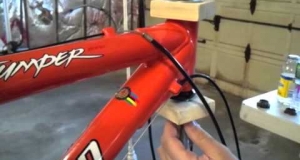
How to Install a Threadless Headset
A headset is basically the piece that holds the fork to the frame of a bike, thereby allowing for steering. A sealed bearing headset normally has a plastic or rubber gasket to protect the insides...
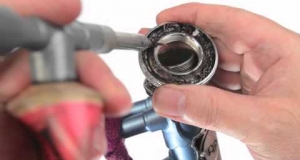
How to Install a Threaded Headset
A headset is basically the piece that holds the fork to the frame of a bike, thereby allowing for steering. A sealed bearing headset normally has a plastic or rubber gasket to protect the insides...

How to Install a Sealed Bearing Headset
A headset is basically the piece that holds the fork to the frame of a bike, thereby allowing for steering. A sealed bearing headset normally has a plastic or rubber gasket to protect the insides...

How to Install a Sealed Bearing Headset/Threaded Headset/Threadless Headset
Headsets are the bike components that provide an interface between the moving forks that steer, and the head tube of the frame. There are a lot of special tools for the installation. If you...
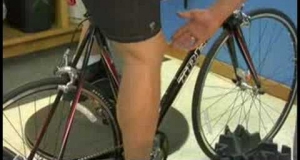
How to Adjust your Bike’s Geometry/Seat Height/Stem Length
Most people who start biking don’t realize that bikes come in different sizes. However, if you have a tall person and a short person get on the same bike, the difference can be clearly seen....


